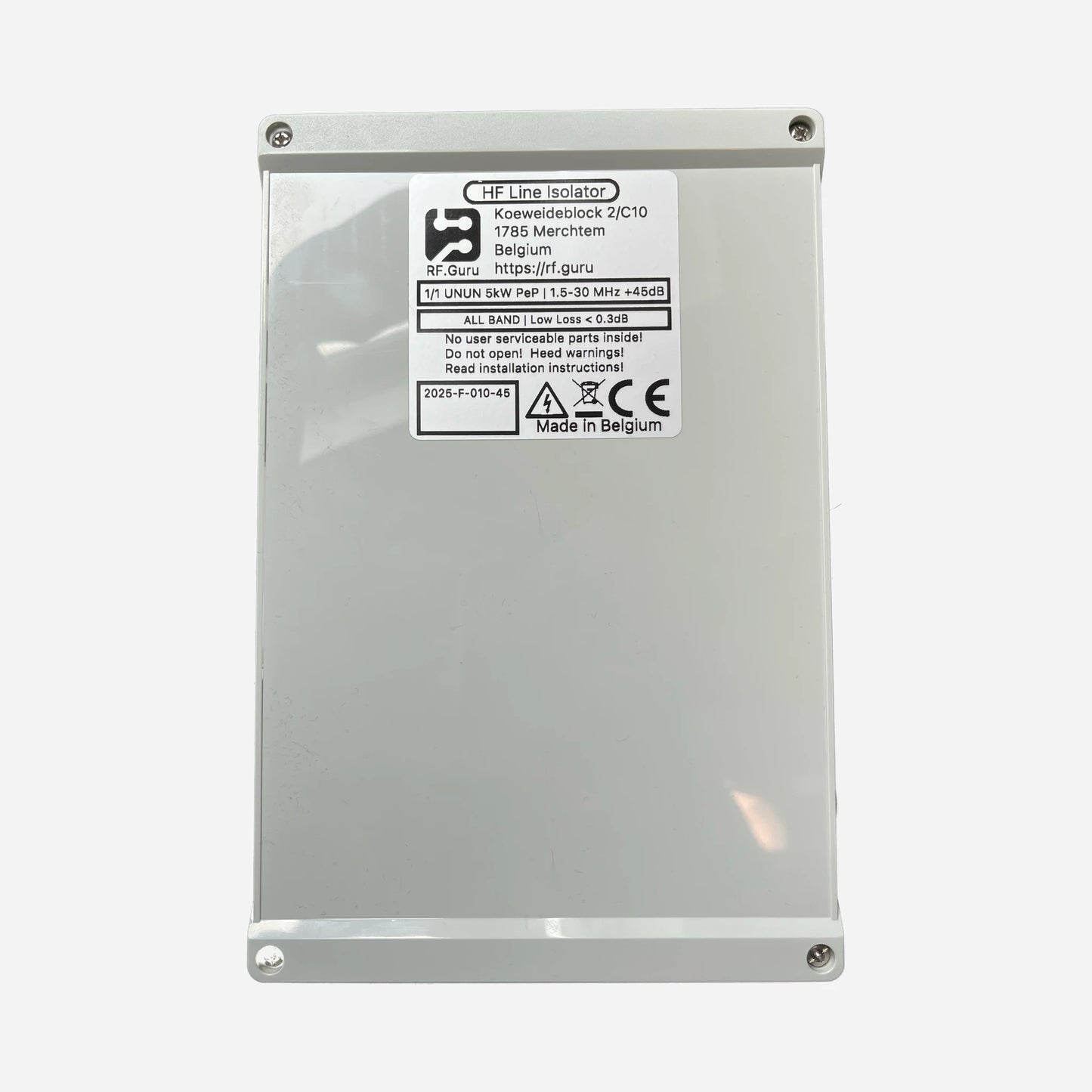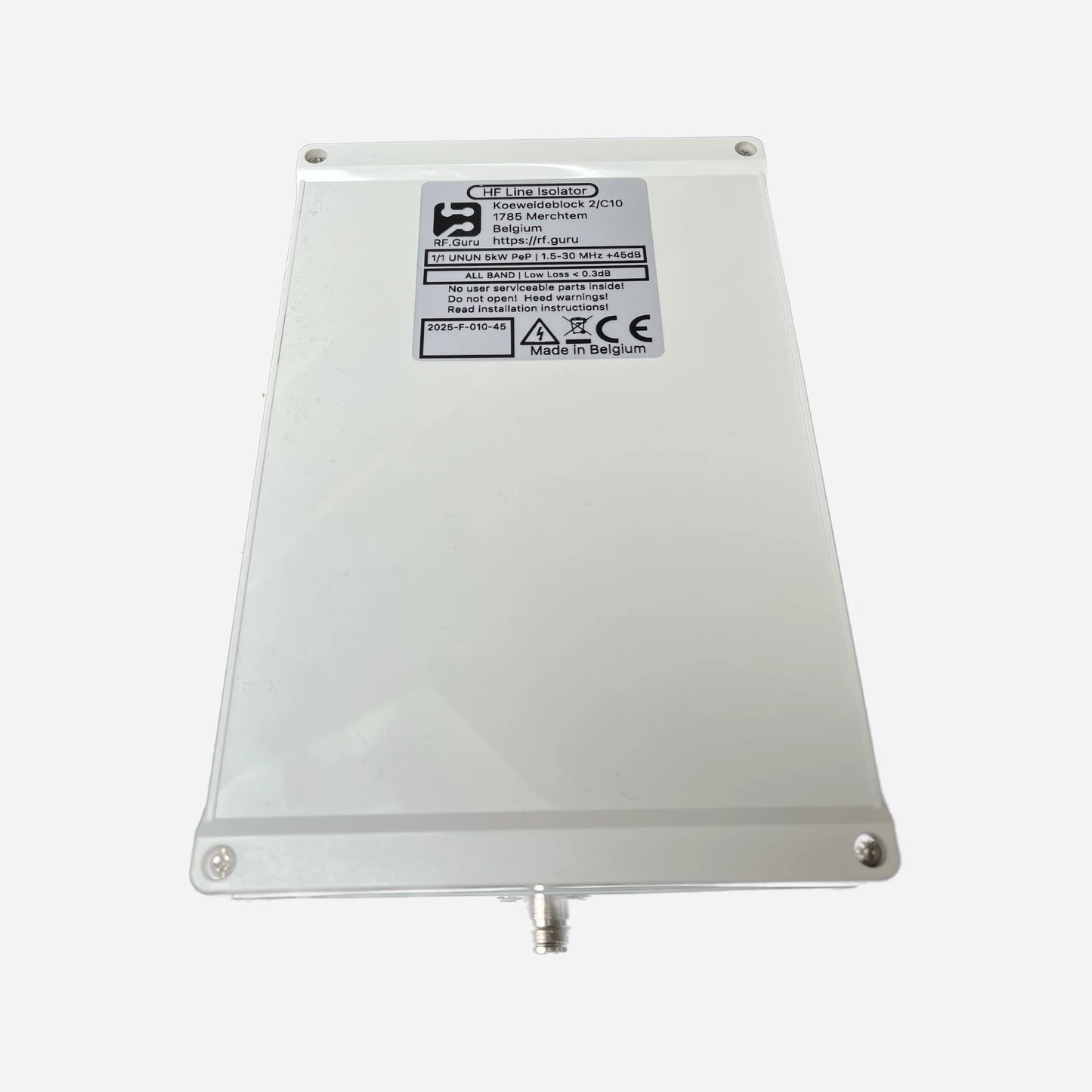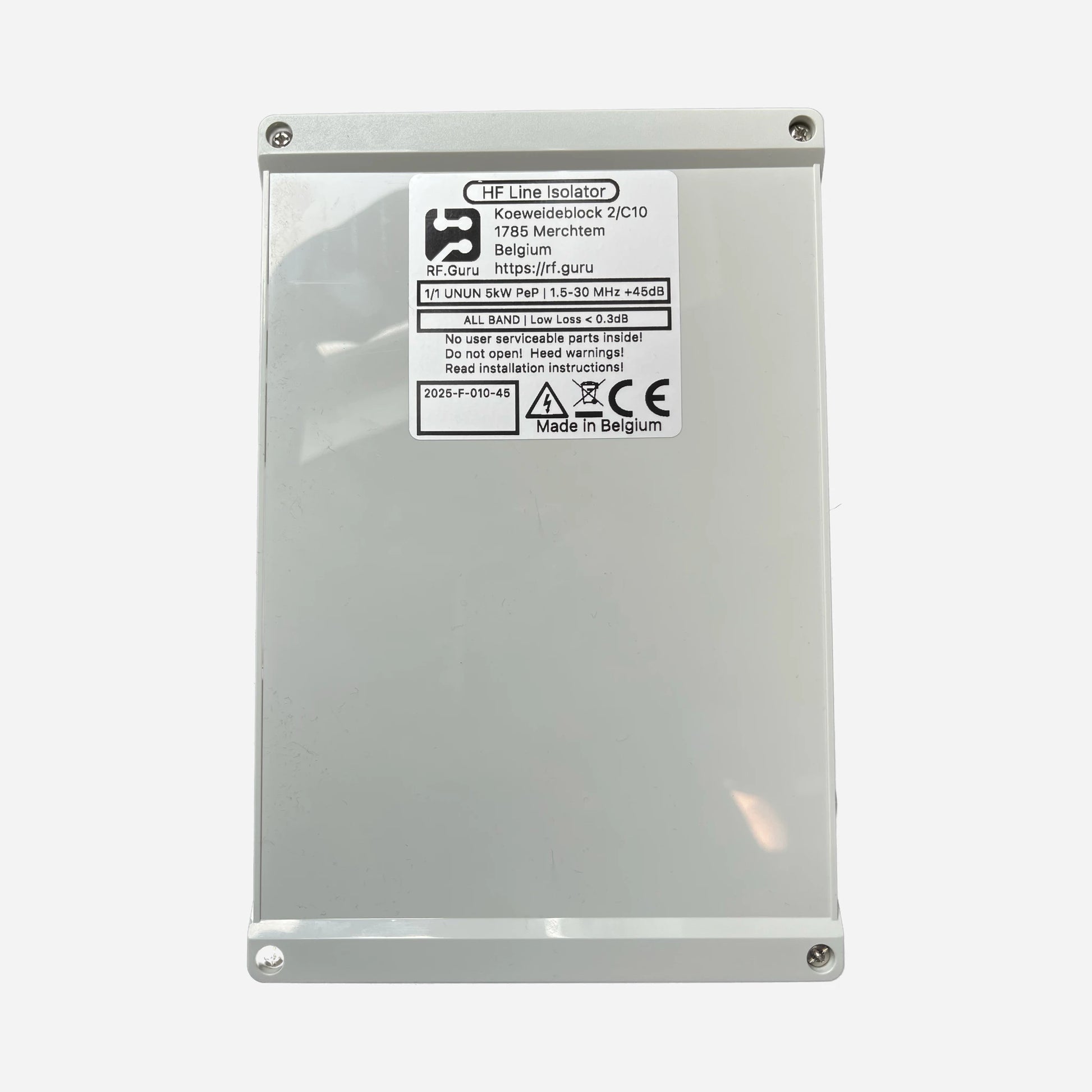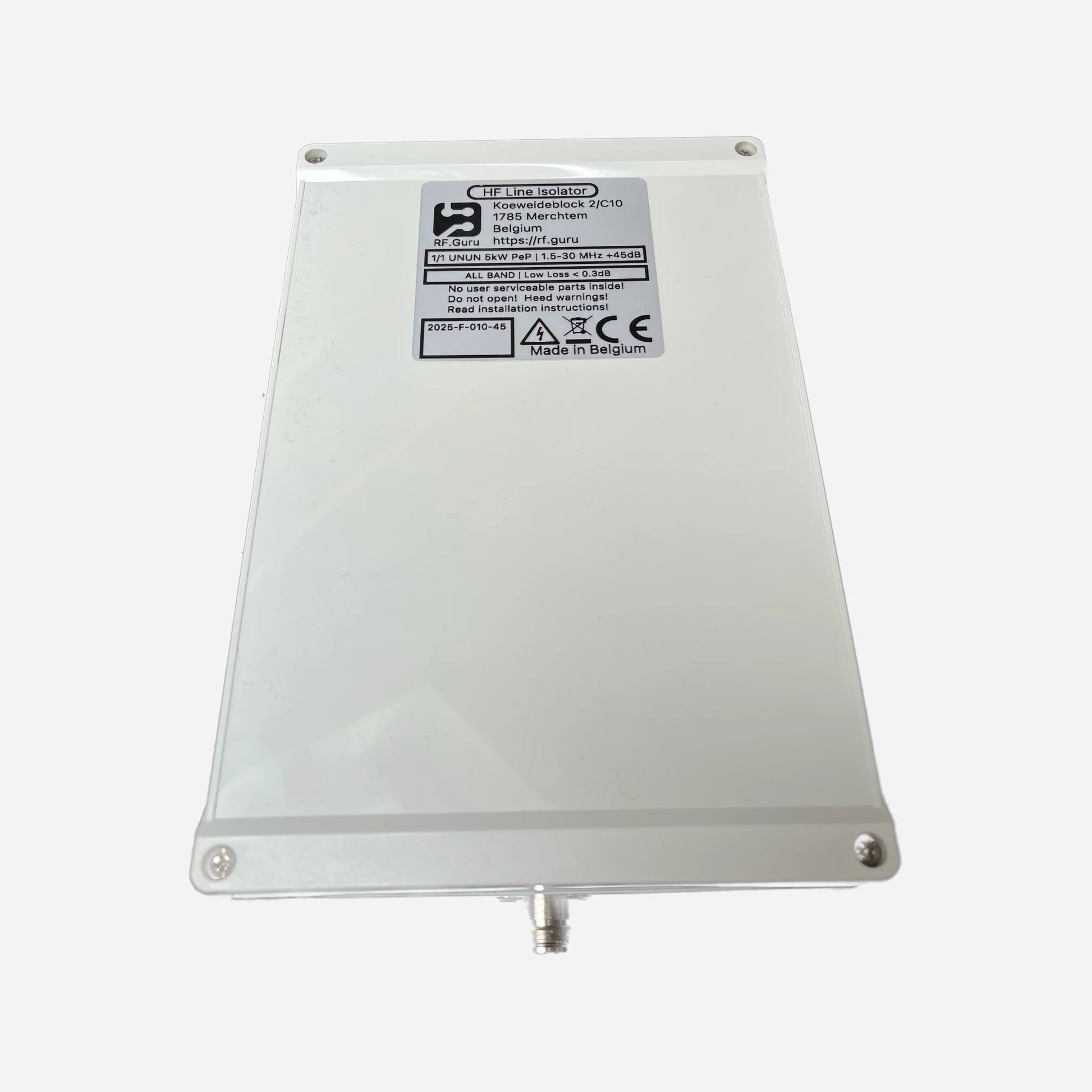RF Guru
10kW ICAS Quad-Core 160–10 m Wideband QRO 1:1 Current Balun or Choke
10kW ICAS Quad-Core 160–10 m Wideband QRO 1:1 Current Balun or Choke
Couldn't load pickup availability
The ultimate integrated station choke for high-power HF systems. Built around four massive 4″ (10.2 cm) ferrite cores in a single enclosure, this choke provides exceptional wideband isolation with more than 30 dB common-mode rejection from 1.8 MHz through 30 MHz. Designed for 10 kW PEP operation on 7/16 DIN connectors, or up to 5 kW PEP with N-type or PL-259 connectors. Encased in a polycarbonate HV-coated housing with custom gaskets and decompression valve — engineered to last a lifetime in QRO environments.
Baluns in a Nutshell
Why “Common-Mode” Is the Most Abused Term in Ham Radio
How Much Choking Do You Really Need — for RX and TX?
The Ultimate Shack-Side Isolation
This choke belongs immediately after your power amplifier, where it stops any residual RF from re-entering the shack. It’s the top tier in the RF.Guru choke chain:
- 1️⃣ Inside the shack: This quad-core wideband choke (PA-behind).
- 2️⃣ Outside the shack: One dual 4″ wideband choke for external line suppression.
- 3️⃣ At the antenna feedpoint: Band-specific QRO chokes for final current balancing.
When multiple chokes are installed in series, their impedances add, increasing the total common-mode isolation. Each doubling of total choking impedance provides roughly +6 dB of additional suppression — meaning two 30 dB units in series yield about 36 dB total isolation.
Specifications
- Core assembly: Four stacked 4″ (10.2 cm) ferrite cores for maximum flux volume
- Frequency range: 1.8 – 30 MHz (160 – 10 m)
- Common-Mode Rejection: > 36 dB across full HF range
- Impedance: up to 16 kΩ on low bands
- Power handling: 10 kW PEP (7/16 DIN) / 5 kW PEP (N or PL)
- Enclosure: HV-coated polycarbonate, silicone gaskets, decompression valve
- Environment: Fully sealed, UV-resistant, pressure-equalized
Measured Performance (Quad-Core Assembly)
Measured under EMC-standard conditions with conservative, real-world accuracy:
| Band | Choking Impedance (Ω) | Common-Mode Rejection (dB) |
|---|---|---|
| 160 m | 24.0 kΩ | 59.6 dB |
| 80 m | 32.0 kΩ | 62.1 dB |
| 40 m | 12.0 kΩ | 53.6 dB |
| 30 m | 4.0 kΩ | 44.1 dB |
| 20 m | 3.2 kΩ | 42.1 dB |
| 17 m | 2.8 kΩ | 41.0 dB |
| 15 m | 2.4 kΩ | 39.6 dB |
| 12 m | 2.0 kΩ | 38.1 dB |
| 10 m | 1.6 kΩ | 36.1 dB |
Maximum ICAS/CCS Power Ratings
| Connector Type | 160–40 m Band | 30–10 m Band | 6–2 m Band | Limiting Factor |
|---|---|---|---|---|
| PL-259 / UHF | ≈ 2.7 kW ICAS | ≈ 1.3 kW ICAS | ≈ 0.6 kW ICAS | Connector |
| Type-N | ≈ 10 kW ICAS | ≈ 5 kW ICAS | ≈ 2 kW ICAS | Coax |
| 7/16 DIN | ≈ 10 kW ICAS | ≈ 5 kW ICAS | ≈ 2 kW ICAS | Coax |
All RF.Guru chokes are characterized using industry-standard EMC common-mode testing. One precision probe injects a controlled common-mode current, while another probe measures the current exiting the choke. This provides a true Common-Mode Rejection (CMR) figure — not a differential impedance reading.
Typical hobbyist VNA tests measure inner-to-outer conductor impedance (differential mode) and don’t reflect real common-mode suppression. Our dual-probe EMC method, aligned with recognized industry standards, quantifies the actual current reduction that keeps RF out of your shack.
Mini-FAQ
-
Q: What makes this different from the dual 4″ choke?
— Twice the ferrite volume in a single enclosure for higher flux tolerance and true wideband 30 dB+ CMR. -
Q: Where should I install it?
— Immediately after the power amplifier, before any tuner or switch matrix. -
Q: What connectors are available?
— 7/16 DIN for 10 kW PEP, or N / PL-259 for up to 5 kW PEP. -
Q: Can it stay outdoors?
— Yes, it’s fully sealed and pressure-equalized for outdoor mounting. -
Q: How accurate are these specs?
— All data are conservative, measured with calibrated EMC probes under load.
Interested in more technical content? Subscribe to our updates for deep-dive RF articles and lab notes.
Questions or experiences to share? Contact RF.Guru.
Share



